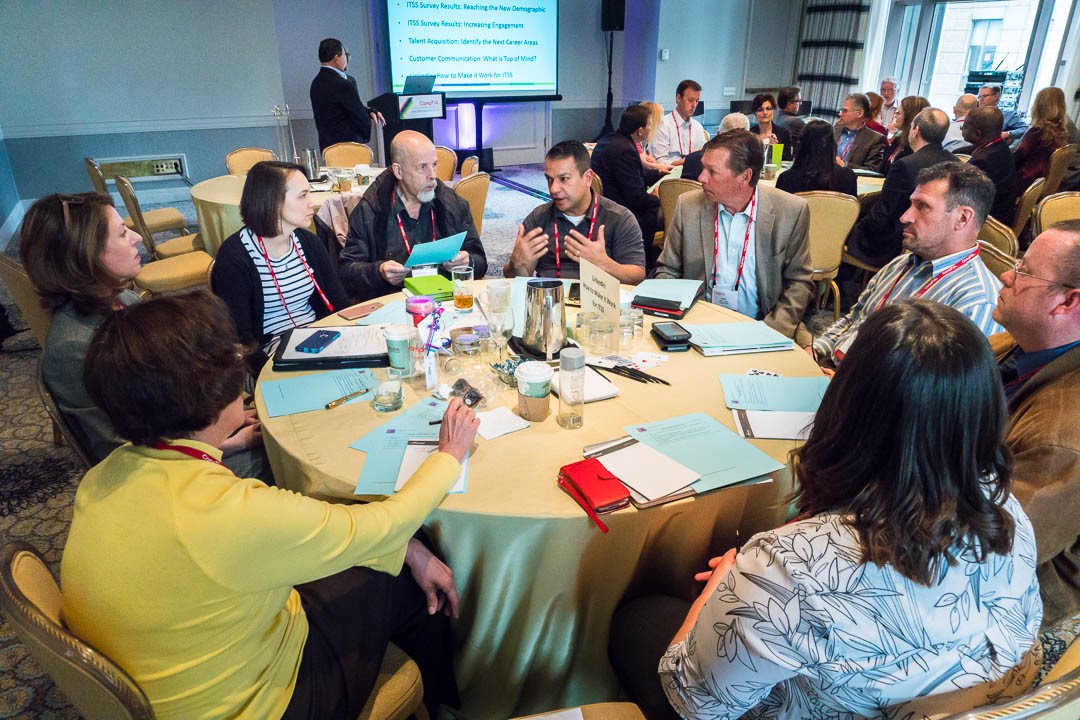The IT Services and Support (ITSS) community has come a long way. As CompTIA’s oldest community, it’s lived through some of the biggest upheavals and shakeups in the channel over the years and grown stronger as a result. But while much has changed since the community’s inception, their dedication to better serving customers remains central to their identity. At AMM 2016, the group came together to reaffirm their commitment to that mission and to explore and better understand every facet of building a great customer experience.

Through a series of TED-style talks, attendees heard from different perspectives aimed at understanding today’s customer experience, and explored the power of our reputation and key factors that influence our relationship with users. “We are only as good as our customer’s last interaction with us,” said Cristina Greysman, senior director of partner experience at Sungard Availability Services, who opened the talks that served as the meeting’s main event. Her words evoked a common theme that underpinned the gathering, the idea that we can’t rest on our laurels, that we have to continue to strive to improve who we are by focusing on where we want to be and what we want to accomplish.
Attendees were soon reminded of the importance of their commitment to that mission. Aaron Woods, Xerox's director of strategic partner programs, who moderated the talks, reminded attendees that unhappy customers aren’t always going to be the ones that tell you you’re doing a bad job. Citing a study by 1st Financial Training Services, he noted that 96 percent of unhappy customers don’t complain, and that 91 percent of those unhappy customers will simply leave unannounced and never come back. The point was clear: customers might not be vocal, but they do act on their feelings.
In addressing this concern, the discussion often falls back on how to better understand how those feelings develop. Because services and support are intangibles, gauging reactions to their perceived success or failure remains a key best practice. But while surveys focused on 1-10 approval rating scales have been around for some time, it’s becoming increasingly clear that this method of measurement is inadequate, offering metrics that don’t end up saying much of anything. Greysman, meditating on that inadequacy, noted that “customer satisfaction is a feeling. Loyalty is a behavior. An excellent customer experience should build loyalty.”
Of course, measuring our own success through customer approval is incredibly important, but it’s not something you can accomplish by simply attaching numbers to customer reactions. Sometimes it pays to work with an outside party to get a new perspective. Continuing that thread, Colleen Howley, vice president of business development at Marathon Deployment, related her company's recent evaluation process with HubSpot and how it impacted their online reputation. Working together, the two were able to better understand who came to their website, what content users positively responded to, and what areas of the site they specifically paid attention to. Most importantly, it helped them understand how those interactions and what information potential customers took away from them fed into their online reputation. And with customers growing more dependent on internet sources in their decision making, the influence of that online reputation should not be ignored.
But while we’re growing more preoccupied with how good we appear virtually, there’s no denying it will always be important to maintain a respectable presence in the real world. Ron Alphin, Parts Now director of customized solution operations, delved into some familiar areas that customers tend to notice during service delivery and support. As he outlined it, in terms of mission and vision, customers want to know exactly what you bring to the table. In terms of expectations, they want to know as much detail as possible concerning what's in store for them. In terms of measuring success, they expect to share in the feedback, results and takeaways you produce. Here, the importance of clear lines of communication became apparent. A reputation is dependent on many factors, but how effectively you communicate with a customer will always be a key influencer in the matter.
When you get right down to it, everything you do develops your reputation. And whether you love it or hate it, it should come as no surprise that your social media presence is having a growing impact on your online reputation. Mary Ellen Grom, SYNNEX U.S. marketing vice president, presented her own story about the impact social media can have. She recalled how, when fielding a negative comment aimed at SYNNEX on Twitter, she was able deescalate the situation by connecting with the annoyed customer, establishing what their issue was, addressing their concern and getting in touch with the proper internal personal to put the full solution in motion. All of which was accomplished in 30 minutes. Summarizing the lessons she’s learned from social media, she boiled down her advice into three points:
-
Think before you share
-
Do unto others as you would have them do unto you
-
Stay alert and positive
The ITSS community is dedicated to helping businesses improve skills and tools to better serve their customers. Their hope is that the best practices they share inspire others in the IT industry towards continual improvement. We are truly only as good as our last impression, and the community’s dedication to their cause ensures the impression they’ll leave is one they can be proud of.

